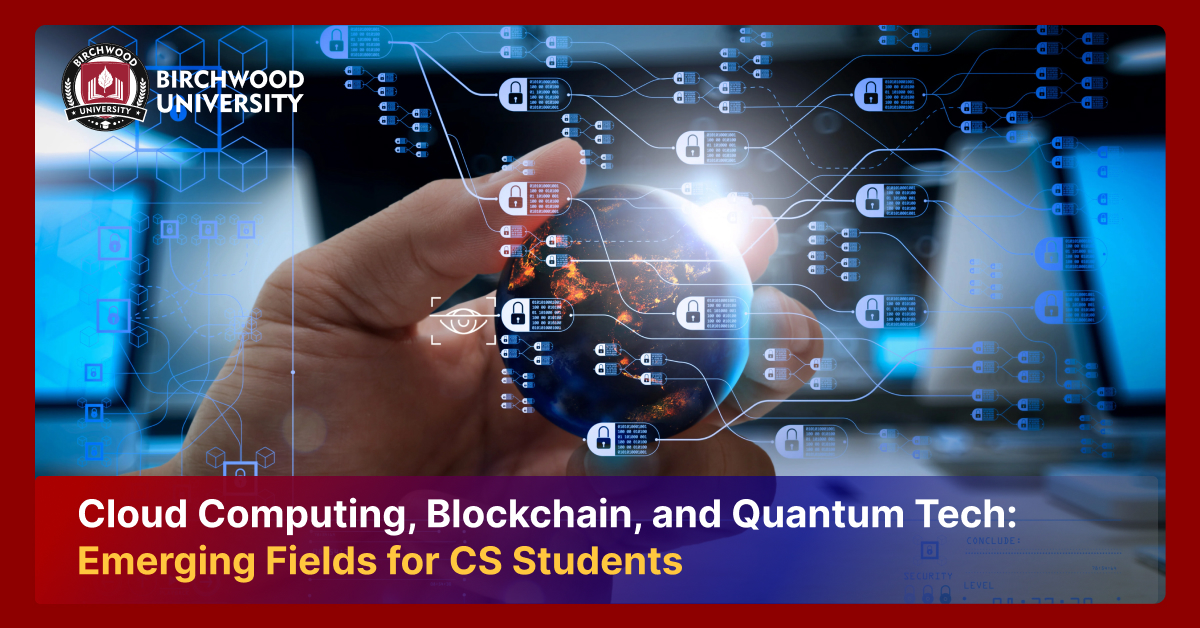Top 20 Cybersecurity Threats 2025: Latest Risks and Simple Defences
Oct 6, 2025
Every year, hackers find new ways to steal money, break into systems, and cause chaos. As we all know, our lives are so heavily online that risks are literally everywhere, whether through banking, work meetings, or smart home gadgets.
But the thing is, if you know what's coming, you can surely do something about it. In this guide, we'll look at the 10 biggest cybersecurity threats in 2025 and provide simple ways to protect yourself.
Top 20 Cybersecurity Threats in 2025
Most of us usually think that hackers have just guessed our passwords or may have sent viruses, but in reality, things have gotten much more advanced than we think. Let's break down the 10 biggest Cybersecurity Threats in 2025, so that you know what they mean and why they matter.
1. AI Scams
In 2020, criminals used an AI voice clone of a CEO to trick a company employee into wiring $243,000. By 2025, these scams will have become much easier and cheaper. AI scams look so convincing and realistic that anyone, from a large company to an ordinary individual, can be tricked. Trusting what you hear or see online is no longer safe. Let's discover how:
The illegal usage of AI is all over the world. Now, instead of sending obvious fake emails with bad spelling, AI can write perfect messages, copy someone's voice or even make a fake video of them. Hackers train AI on real data, like an individual's emails, speeches or social media posts. AI learns their writing style, tone, and even voice patterns. Then, the hacker uses AI to create official emails, phone calls using cloned voices, and deepfake videos where someone appears to say something they never did.
2. Supply Chain Hacks
Even if you protect your own systems, you're still at risk if your suppliers or tools aren't secure. Businesses rely on many third parties. Hackers target these third-party companies (Suppliers, contractors, or software providers) to get bigger organisations. They plant malware or compromise login details, and through that partner, they get access to the larger company's systems or customers.
The SolarWinds hack 2020: Hackers broke into a software provider, added malware to an update, and when thousands of companies downloaded the Update, they unknowingly installed the hacker's backdoor. This gave hackers access to major U.S. government departments and Fortune 500 companies.
You must use software only from trusted, verified vendors. Keep all apps and systems updated, as updates often fix security holes. Prefer segment networks to avoid such scams so that hackers can't reach everything if one part is breached.
3. Smarter Ransomware
If an individual accidentally downloads ransomware by clicking a fake link or opening a bad file, the ransomware encrypts (locks) their files, making them useless. In 2025, ransomware has gotten more intelligent and more aggressive. Hackers now also threaten to publish your sensitive data if you don't pay and demand payment in cryptocurrency.
You could lose access to photos, documents, or financial files, so it's better to back up data regularly and keep a copy offline. Do not ever click on suspicious links or antivirus software. Always use a reputable antivirus and firewall to block common ransomware.
4. The Quantum Question
Quantum computers are super-powerful computers that can solve problems today that traditional machines can't. Companies like Google, IBM, and Chinese research centres are racing to build them. They use the laws of physics to process various possibilities at once, making them millions of times faster at certain problems.
With current technology, cracking the encryption behind your online banking or email is nearly impossible. However, cybersecurity experts say that within 5-10 years, we could reach a point where they can. That means a hacker could steal encrypted data today and simply wait until quantum machines are ready to unlock it.
Your accounts and password are safe for now, but everyday users should stay aware so they can move to quantum-safe apps once they become available. Businesses must start exploring new post-quantum encryption standards that are already in development. For governments and large industries, planning ahead is important, since replacing outdated systems across entire networks takes years. Acting now means avoiding a scramble later.
5. Insecure Smart Gadgets
Smart Gadgets (IoT devices) are everyday items connected to the internet: smart TVs, fridges, baby monitors, security cameras, and even cars. Many are built cheaply and have weak security. The Mirai botnet (2016) hacked thousands of smart cameras and DVRs and used them together to crash major websites like Twitter, Netflix, and PayPal. In 2025, there will be far more smart gadgets, so the risk is bigger.
6. Injection Attacks
Injection attacks occur when hackers insert harmful code into a website or app through input fields, URLs, or forms. Instead of treating the input as text, the system mistakenly runs it as a command.
SQL Injection is the most common type. In this type, attackers send tricky text into a login box or search bar, forcing the database to reveal private information like usernames or passwords.
Code Injection enables attackers to insert malicious code into an application, changing how it works or stealing data.
OS Command Injection happens when a system takes user input and passes it to the operating system, letting attackers run dangerous commands.
7. Cloud Container Vulnerabilities
Containers and microservices are mini boxes that hold pieces of an application. They are used to build apps faster. They are quick and flexible, but they can have some consequences if not appropriately secured. They can expose data or allow attackers to move across systems easily. To avoid such things, you must use strong access controls, scan for weaknesses often, and never store sensitive info without encryption.
8. Zero-Day Exploits
This targets unknown software bugs before the company that made the software even knows the flaw exists. Since no fix is ready, these attacks can hit hard and fast. Hackers use them to take control of systems, steal data, or spy on users. However, attacks done by this are hard to predict, but keeping all programs well updated, using strong antivirus tools and applying patches as soon as they're released can lower the risk.
9. Data Poisoning
It usually happens when hackers feed false or harmful information into systems that use machine learning or AI models. These systems then start learning those wrong patterns which lead to bad decisions or failed security checks. For example, a poisoned spam filter may allow real phishing emails through. Businesses can defend against this by checking where their data comes from, using clean datasets while watching for sudden changes in how their systems behave.
10. Social Engineering 2.0
Social Engineering has always been about tricking people instead of their systems, but in 2025, it has become far more personal and genuinely harder to spot. A hacker may pretend to be a coworker, family member, or delivery company and trick you into clicking on a fake link or sharing private details. These scams don't rely on technical skills, but they rely on trust. That’s why you should always confirm through a different channel before sending money, sharing passwords, or clicking links.
11. AI-Powered Infostealer Malware
Infostealer malware in 2024-25, which are programs that covertly steal credentials, session tokens, banking logins and personal data, surged in sophistication. As a result, hackers are now employing AI-powered phishing to automatically steal credentials, thus they can get hold of passwords or login tokens and then use them for unauthorized access to accounts or corporate networks. One of the ways "Lumma" like variants were able to do this, as reported, was by infecting vast numbers of devices through phishing campaigns in the year 2025. The moment the attackers get hold of the credentials, they can in most instances, bypass two-factor authentication, take over email or financial accounts, or move laterally in a network.
Defense mechanism: Have strong and different passwords for your accounts, switch on MFA, keep away from dubious links; get an endpoint security that is trustworthy and be very careful with every unexpected mail.
12. Modular and Autonomous Ransomware (Ransomware 2.0)
Ransomware has evolved beyond simple file encryption. Most variants today use a modular design and automated distribution (usually through Ransomware-as-a-Service or "Raas"). Firstly, the attackers steal the sensitive data, and then they encrypt the system - thus demanding a ransom with a threat of publishing the private data (double-extortion). This trend escalated very fast in 2024/2025: 32% of all the breaches that were reported have been associated with ransomware/data-extortion. (Source: Tech Target) The core sectors (healthcare, manufacturing, education) are heavily weighted as the most likely to be targeted.
Defence: Keep backups that are offline and encrypted; always update and patch your systems; use strong EDR/XDR security layers; divide your networks so that the attackers cannot move laterally; do not pay ransoms (which very rarely ensure the safety of data).
13. Zero-Day Exploits and Rapid Weaponization
In 2025, there are software defects that are not known to the vendors – "zero-day" vulnerabilties – which are being used for a fast-paced attack in the record time. In a recent incident, the intruders leveraged a zero-day in the software widely used by enterprises to run arbitrary code and take control of the systems. Since no one has a patch yet, standard antivirus and firewalls are usually ineffective. This kind of threat is extremely harmful to old systems, big enterprises, or essential facilities, for example, places where patching may be delayed.
Defence: Implement virtual patching through web application firewalls (WAF), do not use software that is outdated, keep an eye on the unusual behaviour (anomaly detection), and if the patches are available, apply them without delay.
14. AI-Generated Social Engineering & Deepfake Scams
AI-driven social engineering is becoming a pandemic threat. Fake voice calls, video deepfakes, and convincingly written phishing mailers are now used to impersonate executives, relatives, or trusted contacts. For instance, organisations and individuals globally have reported "virtual-kidnapping" scams—where attackers send deepfakes videos or images of loved ones and demand ransom. Such scams are particularly effective because they attack trust more than technical vulnerability.
Defence: Verify identity via alternate channel (call or chat), do not believe unsolicited messages demanding money or sensitive info; educate friends/family about deepfake tricks; use MFA and avoid sharing sensitive info.
15. Cloud & Virtualization Infrastructure Attacks
As more companies migrate to cloud services and virtualization, attackers target vulnerabilities in these platforms. In 2025 a new ransomware variant targeted VMware ESXi servers, encrypting virtual machines and crippling data centers. Cloud mis-configuration—such as open storage buckets, weak credentials, or unprotected APIs—remains a common entry point for attackers.
Defence: Harden cloud configurations, apply the principle of least privilege, use encryption at rest and in transit, monitor logs for unusual access, conduct regular cloud-security audits.
16. Data Poisoning of AI / ML Systems
As more services rely on AI and machine learning (for healthcare, finance, predictions), attackers are now "poisoning" training data to corrupt models. Recent research shows that even a small tampered subset (100-500 samples) can derail large AI systems, making them unreliable and dangerous — especially in sensitive areas like healthcare or finance. Once models are poisoned, flaws may remain hidden for months, because detection is hard and outputs may subtly degrade.
Defence: Vet and sanitize all input data, use adversarial-testing for AI models, monitor model-behavior over time, implement robust, transparent model architectures (not opaque "black-box ones).
17. Neuromorphic/Edge-Device Attacks (Emerging Hardware Risks)
An emerging threat in 2025 is targeted at neuromorphic / brain-inspired computing devices used for edge, AI, IoT networks, or smart implants: attackers can use "neuromorphic mimicry" — tampering with synaptic weights or sensory inputs — to evade detection and trigger veiled intrusions. Because these attacks mimic legitimate neural activity, conventional intrusion detection systems often fail to spot them. As edge computing becomes common (smart vehicles, medical devices, IoT), this risk grows.
Defence: Develop and adopt neural-specific anomaly detection; apply secure "learning protocols"; isolate critical devices; avoid relying solely on traditional security tools for edge/AI hardware.
18. Deep-Supply-Chain & Third-Party Ecosystem Risks
Modern applications depend on many third-party modules, open-source libraries, and external vendors. A weakness anywhere in this chain can compromise the entire system. In 2024-25, supply-chain attacks rose sharply: a major share of breaches begin in vendors or external software dependencies. Attackers exploit outdated components, mis-configured APIs, or unpatched dependencies. Once inside, they can spread across the system unnoticed.
Defence: Audit all third-party dependencies; use trusted and vetted vendors; regularly update components; isolate/sandbox external code; monitor for unusual behavior across supply-chain links.
19. Cloudless IoT Devices Exploited via Anonymizing Networks
Hackers are frequently using methods like Tor to hide activities while they attack cloudless IoT devices that are not properly secured. These devices that are connected to the internet directly allow the attackers to escape the surveillance, perform remote code execution, completely take over the device. Research in 2025 revealed that more than 12 million devices were found to be insecure.
Defence: Not allowing direct exposure, enforcing segmentation, getting rid of default credentials, using encrypted VPN access, and making sure firmware updates are applied consistently.
20. Targeted Attacks on Critical Infrastructure & OT
Threat actors are increasing the frequency of their assaults on OT environments—by employing ransomware, zero-day exploits, and insider support. There were more than 300 ransomware incidents reported worldwide between April and September 2025.
Defence: IT-OT segmentation, habitual patching, rigorous access control, OT-ware intrusion detection, organized drills.
In Short:
Cybersecurity may sound complicated at first, but most of its protection comes from an individual's habits like using strong passwords, updates, backups and staying alert. Hackers aren't slowing down in 2025, but if you stay aware and act early, you can make yourself a much harder target.
FAQs
What are the top cybersecurity threats in 2025?
AI-powered attacks, ransomware, cloud misconfigurations, supply chain attacks, IoT vulnerabilities, and deepfakes are among the biggest threats this year.
How can businesses prevent ransomware attacks in 2025?
The best defences include regular backups, endpoint detection, employee training and a tested incident response plan.
Is quantum computing a real cybersecurity risk?
Not today, but in the near future, quantum computers could break current encryption, so organisations must start preparing with quantum-safe cryptography.






